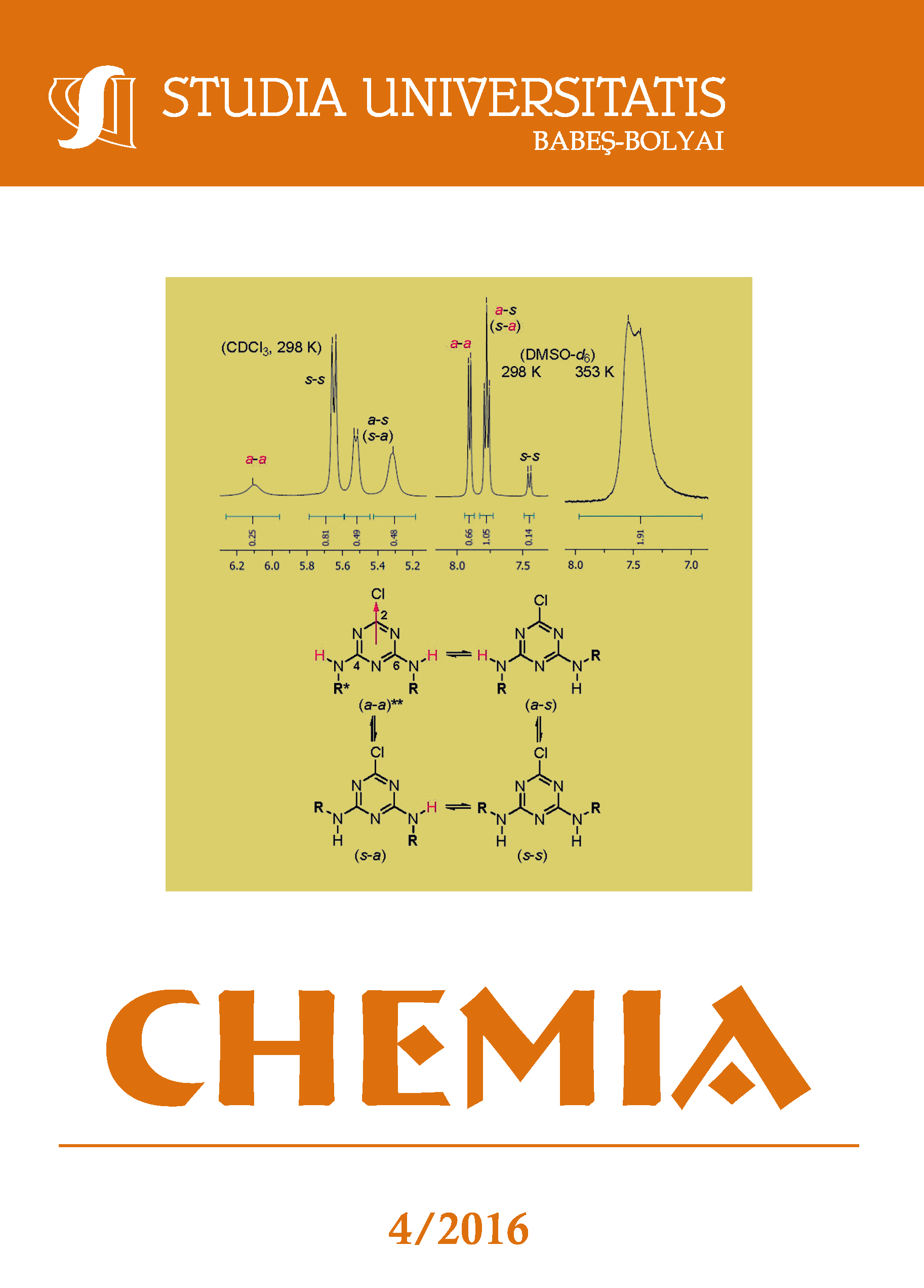SOLUTIONS IN THE COAGULATION OF OIL WASTEWATER
Keywords:
Total Petroleum Hydrocarbons, wastewater coagulation, polyaluminum chloride, coagulant aids, costsAbstract
Coagulation is one of the most important stages of the oil wastewaters pre-treatment. Oil wastewaters coagulation that we have studied and which had a content of 95.9-270.6mg Total Petroleum Hydrocarbon (TPH)•L-1 required optimal doses of polyaluminum chloride (PAC) coagulant between 12.0-16.4mgAl•L-1. In the PAC coagulation, the use of various coagulants aids with absorbent properties, such as: indigenous volcanic tuff, charcoal, anaerobic biologic sludge led to: 1. The PAC dose reduction with 30-50%; 2. Turbidity, Total Organic Carbon (TOC), TPH and absorbance at wavelength 254 nm, A254, of treated samples in the presence of aids and reduced PAC doses were similar vs. samples treated with non-reduced PAC doses in aids absence. The use of indigenous volcanic tuff as coagulation aid led to coagulation sludge which are able to sediment with faster than the sludge obtained with PAC coagulation but without aid. More the volume of the coagulation sludge obtained is reduced with 50% vs. one obtained in other variants. By adding coagulation aids there was a reduction of coagulation reagent costs up to 50%. The correlation between A254 and TPH parameters can be useful in establishing on-line relationships that could ease the operators’ activity in wastewater treatment plants.
References
American Petroleum Institute, “Management of Water Discharges: Design and Operations of Oil-Water Separators”, 1st ed., Washington D.C., USA, 1990, chapter 1-5.
B.H. Diyauddeen, W.M.A.W. Daud, A.R.A. Ayiy, Process Safety and Environmental Protection, 2011, 89, 95.
C. Majdik, G. Katona, M. Chintoanu, M. Roman, E. Luca, S.M. Simon,T. Rusu, C. Roman, Studia UBB Chemia, 2011, 1, 275.
N. Ilias, A. Draghici, D. Draghitoiu, S. Ghelagiu, A. Cornescu, Analele Universitatii „Constantin Brancusi” Tg Jiu, Seria Inginerie, 2009, 3, 147.
J. Saththasivam, K. Loganathan, S. Sarp, Chemosphere, 2016, 144, 671.
V.K. Gupta, I. Ali, T.A. Saleh, A. Nayak, S. Agarwal, RCS Advances, 2012, 2, 6389.
R. Crisafully, M.A.L. Milhome, R.M. Cavalcante, E.R. Silviera, D. de Keukeleire, R.F. Nascinto, Bioresource Technology, 2008, 99, 4515.
M. Senila, E. Levei, L. Senila, O. Cadar, M. Roman, M. Miclean, Studia UBB Chemia, 2015, 2, 137.
W. Tian, J. Bai, K. Liu, H. Sun, Y. Zhao, Ecotoxicological Environmental Safety, 2012, 8, 1.
J.T. Alexander, F.I. Hai, T.M. Al-aboud, Journal Environmental Management, 2012, 111, 195.
R. Fabris, C. Chow, T. Tran, S. Gray, M. Frikas, Development of Combined Treatment Processes for the Removal of Recalcitrant Organic Matter, Research Report no. 38, Salisbury, Australia, CRC for Water Quality and Treatment, 2008, chapter 1.
M. Carbureanu, G. Catalina, Revista de Chimie, 2014, 65, 1498.
S.C. Cheu, H. Kong, S.T. Song, K. Johari, N. Saman, M. A. C. Yunus, H. Mat., Journal of Environmental Chemical Engineering, 2016, 4(1), 864.
C.E. Santo, V.J.P. Vilar, C.M.S. Botelho, A. Bhatnagar, E. Kumar, R.A.R. Bonaventura, Chemical Engineering Journal, 2012, 183, 117.
H. Farajnezhad, P. Gharbani, IJRRAS, 2012, 13, 306.
S.M. Koch, J.B. Dixon, Applied Clay Science, 2001, 18, 111.
B. Guo, H. Yu, B. Gao, H. Rong, H. Dong, D. Ma, R. Li, S. Zhao, Colloids and Surfaces A: Physicochemical and Engineering Aspects, 2015, 481, 476.
M. Sueyoshi, R.S. Al – Maamari, B Jibril, M. Tasaki, Kazuo Okamura, H. Kuwagaki, H. Yahiro, K. Sagata, Y. Han, Journal Analytical and Applied Pyrolysis, 2012, 97, 80.
M. Ng, A.E. Liana, S. Liu, M. Lim, C.W.K. Chow, D. Wang, M. Drukas, R. Amal, Water Research, 2012, 46, 4614.
A. Ghirisan, S. Dragan, Studia UBB Chemia, 2011, 2,115.
A.M. Steele, Thesis Ultraviolet Absorbance at 254 nm as an Indicator of Petroleum Hydrocarbon Removal by Activated Carbon: a case study, University of California, Davis, 2013, chapter 2-3.
S. Masu, Proceedings of the 20th International Symposium on Analytical and Environmental Problems, Szeged, Hungary, 22nd, September, 2014. 71.
S. Mâșu, Revista de Chimie, 2011, 62(1), 64.
***HG 352/2005 NTPA 002 amending and supplementing Government Decision no 188/2002 to approving the rules on the condition of discharging wastewater into the aquatic environment, Government of Romania, Monitor Official, Bucharest, 2005, 378.
D.S. Barwon, Proceedings of 72 nd Annual Victorian Water Industry Engineers and Operators Conference Bendigo, Australia, 2009, www.wioa.org.au/vic/.
Water Treatment - Yearly OM Costs Problems, CIVL, 1-7, www.ce.memphis.edu/1112/.../group_problem_treatment.
G. Degremont, “Water Treatment Handbook - 1991 sixth edition”, Lenntech B.V., Rotterdamseweg, 1991, volume1-2, http://www.lenntech.com/scientific-books/water-treatment/degremont-water-treatment-handbook.htm#ixzz4FQ1YCKTB.
Downloads
Published
How to Cite
Issue
Section
License
Copyright (c) 2016 Studia Universitatis Babeș-Bolyai Chemia

This work is licensed under a Creative Commons Attribution-NonCommercial-NoDerivatives 4.0 International License.



